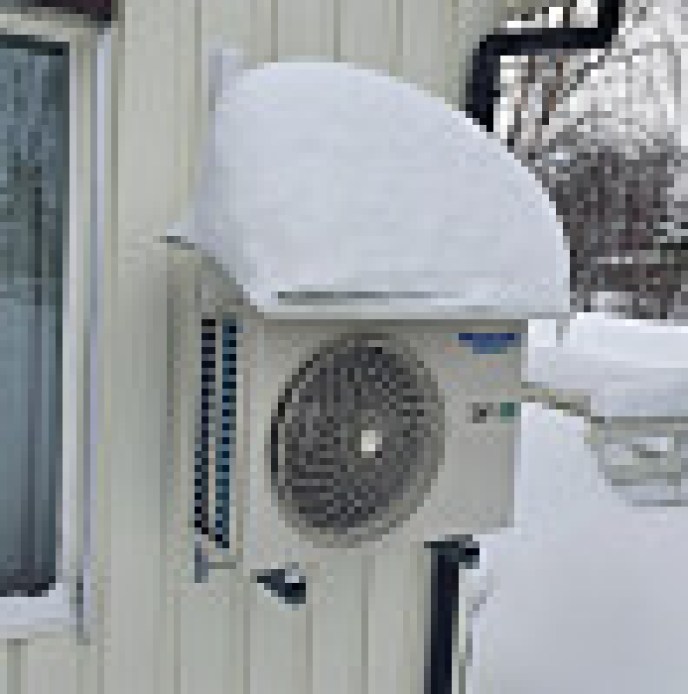Air-to-air heat pumps are a popular heating method in this country. The increased electricity prices have meant that sales have reached records. Even in the cabin, more and more people are getting a heat pump.
Winter trouble
It is recommended to buy and install a heat pump in the spring, as the weather is drier and this minimizes the risk of moisture in the wall during installation.
When installing the outdoor unit, it is important to take into account where the water will flow. Especially in winter, any problems related to this can become visible, writes the House Owners’ National Association’s member magazine Hus og bolig.
– There must be good drainage under the pump, so that the water can drain away. If you have the heat pump right by the front door and large amounts of water that run down in front of the door and settle there like ice in winter, it’s not very smart, says sales manager Stig Jørgensen at Kinnan, a distributor of heat pumps throughout the Nordics, to member magazine.
Dispels the myth about heat pumps
In winter, the heat pump defrosts itself automatically to avoid the permanent formation of ice, frost and snow on the outdoor area. This sometimes generates quite a lot of water.
– There can be up to a couple of liters of water per hour, and during a winter there can be a lot of ice, says Jørgensen.
Can blow up the pump
This can be problematic in several ways. Some may find that the ice settles where you have to walk, so that it becomes slippery. Another problem is that it flows towards the foundation wall, and draws in there.
If the water just stays directly under the pump, large ice swells can also quickly grow, explains Jørgensen to DinSide. In the worst case, they can grow so large that they burst the pump from below.
– Place the outdoor unit in a place where there is good drainage in the ground below. If this is not possible, you should have what is called a drip pan fitted with a heating cable. Then the water can be directed away to a place so that ice swells are avoided under and around the outdoor area, explains Jørgensen.
Heat pumps sold in Norway today must be well equipped for Norwegian winter weather.
– We always recommend that you should be at least half a meter above the ground when installing a heat pump, says Rolf Iver Mytting Hagemoen, general manager of the Norwegian Heat Pump Association to DinSide.

– Drop auto!
Can be moved
Snow can also be a problem, perhaps especially in the cabin where you don’t have the opportunity to shovel away large amounts of snow as often as at home.
– If you live in a place where there is a lot of snow, the outdoor unit should be placed in a place where the snow does not accumulate. In addition, it should perhaps be hung a little higher on the wall, advises Jørgensen.
According to Jørgensen, it is also a good idea to put a roof on the outdoor area so that snow does not collect on the outdoor area. If snow accumulates on the outdoor area, this can make it less efficient, he says.

UNDER THE ROOF: If you choose to build in the outdoor area, this should be done by professionals, says Stig Jørgensen in Kinnan. – The outdoor area needs access to a lot of “fresh air” and if the building is too tight, this will weaken the efficiency of the heat pump, he says.
sea view
Heat pumps must be installed by a specialist, people are not allowed to do this themselves. However, according to Mytting Hagemoen, there is no problem for an installer to move a heat pump afterwards.
– If you have gone against the installer’s advice and chosen the location yourself, you may end up having to pay a few thousand for it, he says.
Warns against this
If ice forms under the outdoor unit, care must be taken that the ice does not “grow” up in the outdoor unit itself, as this can damage the heat pump as mentioned.
– If this has nevertheless happened, you should call in professionals to have it removed and not try to remove it yourself. So it might be a good idea to scrape away ice before it reaches the heat pump and to have a drip pan installed, says Jørgensen.
According to Kinnan, one of the most common mistakes heat pump owners make is that users try to remove ice in and on the outdoor unit themselves.
